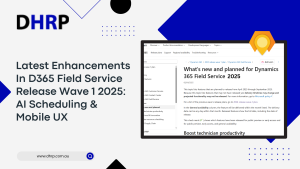Do you know what hidden costs might be impacting your CRM implementation budget? Are you prepared for unexpected expenses that could arise? Calculating the cost of CRM can seem daunting, with many factors affecting the final expense. There is always something lurking that is making your expenses go higher.
One key consideration is whether you opt for a cloud-based or on-premises CRM system, as each comes with its own set of costs and implications. Cloud-based solutions typically have lower initial costs but may involve ongoing subscription fees, while on-premises systems require a larger upfront investment in hardware and software, along with maintenance costs.
The most significant aspect is understanding hidden or unexpected factors that might affect the cost. So, how do you calculate the right cost?
If you are digitally transforming your business and looking to implement CRM, look out for some factors that affect the cost. In this article, we will talk about the hidden costs to help you plan your budget accordingly.
How Much Does A Crm Cost?
Strong customer connections might often necessitate a significant investment.
Though some of these may vary in size among companies, they are always present in some form.
CRM implementation costs are divided into two categories: apparent and hidden costs.
Whether you have a staff of two or 2,000, deploying a CRM for your organisation is a huge matter. It requires time, money, and effort. However, CRM implementations can often go wrong—even when sales teams are aware of the additional costs. How?
- It exceeds the budget.
- Months after the deadline, the implementation is still not complete.
- Failure to satisfy expectations (even after setup)
- Low user adoption
When you know the exact expenses, you can keep your project on schedule and your budget under control. You may also more effectively define expectations for the tool and create a CRM that addresses the most pressing issues in your business.
Factors To Watch Out To Understand Hidden Cost Of CRM Implementation
CRM implementation expenses always include the cost of setting up your new CRM and moving your data. This is one of those expenses most likely concealed deep in the fine print of your new CRM’s pricing page.
But is it merely migration, or is there something else involved?
The number of users also influences the implementation of the CRM system. As a result, the cost rises with the size of the company and the number of people who use the CRM. CRM costs small firms approximately $12 per user per month.
Larger enterprises with more stringent requirements may find the monthly cost to be between $50 and $150 per user. If you choose expensive software, you could end up paying $300 or more per user every month.
As a result, while budgeting your CRM implementation budget, you must first identify the number of users the CRM system will have. Accurately determining the number of users allows you to not only predict the costs involved with implementing a CRM system but also to select the best software to save money and optimise your spending.
Complex tasks require a team of highly skilled individuals. Acquiring high-quality individuals influences the cost of establishing the CRM system.
Furthermore, where developers are located can affect expenses. For example, Asian technology professionals may earn lower hourly rates than those in Europe.
Poor CRM implementation frequently results in inaccurate or incomplete data entry. Errors in data entry can lead to incorrect information about customers, sales possibilities, and follow-up.
This not only impacts decision-making but may also result in lost revenue and a poor customer experience, causing the company’s reputation to suffer.
Customisation, installation, and integration are only half the battle when it comes to establishing a new CRM system. The other struggle is about user adoption. Your team is oblivious to the system, and they need training. Besides, bringing all departments together is also significant. User adoption is critical to CRM success.
The Merkle Group reports that 63% of CRM initiatives fail. User adoption is a major contributor to most firms’ failures.
Your service level cost depends on three factors:
- The pricing plan level refers to the service bundle purchased from the vendor.
- The quantity of records, contacts, or data points can be stored for a set price.
- Add-ons include any paid features, integrations, or capabilities that can be added later.
CRM suppliers provide several ‘levels’ or ‘tiers’ of a CRM platform under the software-as-a-service (SaaS) business model. Each price plan level includes a certain set of features and capabilities.
Microsoft Dynamics 365 CRM Pricing
If you know exactly what features you want or simply require a few apps on the Dynamics 365 platform, you may buy them individually and design your solution from the beginning.
However, the Cost of CRM implementation also depends on the size and functional requirements of your sales staff.
The average cost of CRM implementation can go from $10,000 to $15,000 each year on subscriptions, with implementation expenditures totalling $20,000.
Bottom line
In the end, it is all about keeping your requirements clear. Just have your vendor consultant by your side and discuss all the details with them.
Let our DHRP consultants help you navigate the right implementation path with a perfect CRM implementation cost breakdown.
If you need a breakdown of the latest Dynamics 365 pricing and licensing costs, we at DHRP are ready to help and steer you in the right direction.




































































































